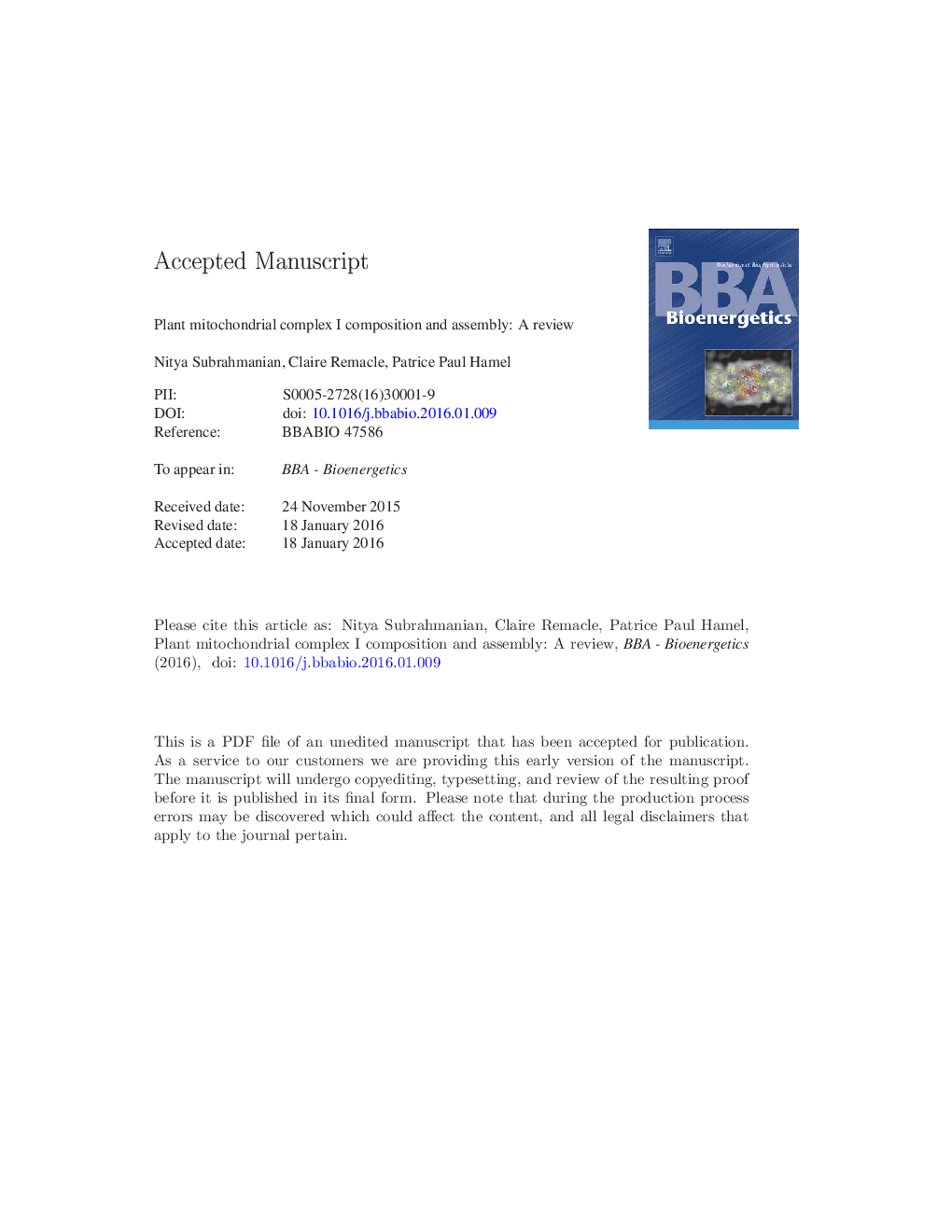| Article ID | Journal | Published Year | Pages | File Type |
|---|---|---|---|---|
| 10795207 | Biochimica et Biophysica Acta (BBA) - Bioenergetics | 2016 | 46 Pages |
Abstract
In the mitochondrial inner membrane, oxidative phosphorylation generates ATP via the operation of several multimeric enzymes. The proton-pumping Complex I (NADH:ubiquinone oxidoreductase) is the first and most complicated enzyme required in this process. Complex I is an L-shaped enzyme consisting of more than 40 subunits, one FMN molecule and eight Fe-S clusters. In recent years, genetic and proteomic analyses of Complex I mutants in various model systems, including plants, have provided valuable insights into the assembly of this multimeric enzyme. Assisted by a number of key players, referred to as “assembly factors”, the assembly of Complex I takes place in a sequential and modular manner. Although a number of factors have been identified, their precise function in mediating Complex I assembly still remains to be elucidated. This review summarizes our current knowledge of plant Complex I composition and assembly derived from studies in plant model systems such as Arabidopsis thaliana and Chlamydomonas reinhardtii. Plant Complex I is highly conserved and comprises a significant number of subunits also present in mammalian and fungal Complexes I. Plant Complex I also contains additional subunits absent from the mammalian and fungal counterpart, whose function in enzyme activity and assembly is not clearly understood. While 14 assembly factors have been identified for human Complex I, only two proteins, namely GLDH and INDH, have been established as bona fide assembly factors for plant Complex I. This article is part of a Special Issue entitled Respiratory complex I, edited by Volker Zickermann and Ulrich Brandt
Keywords
Related Topics
Life Sciences
Agricultural and Biological Sciences
Plant Science
Authors
Nitya Subrahmanian, Claire Remacle, Patrice Paul Hamel,
